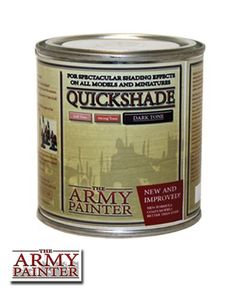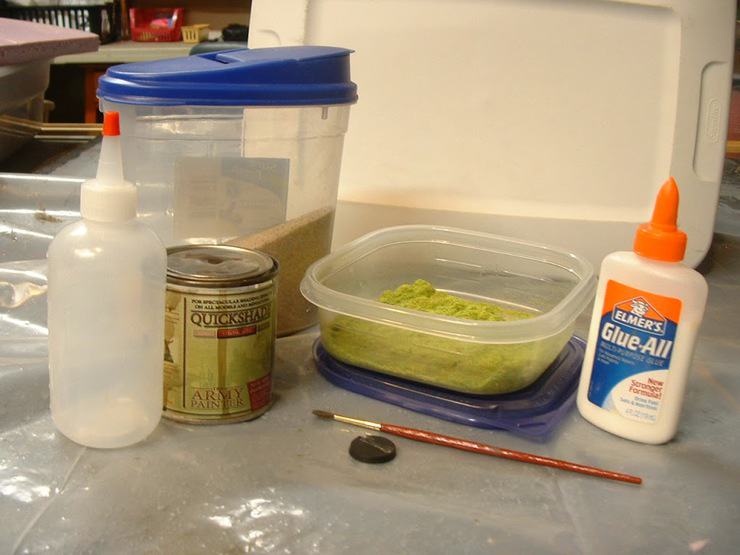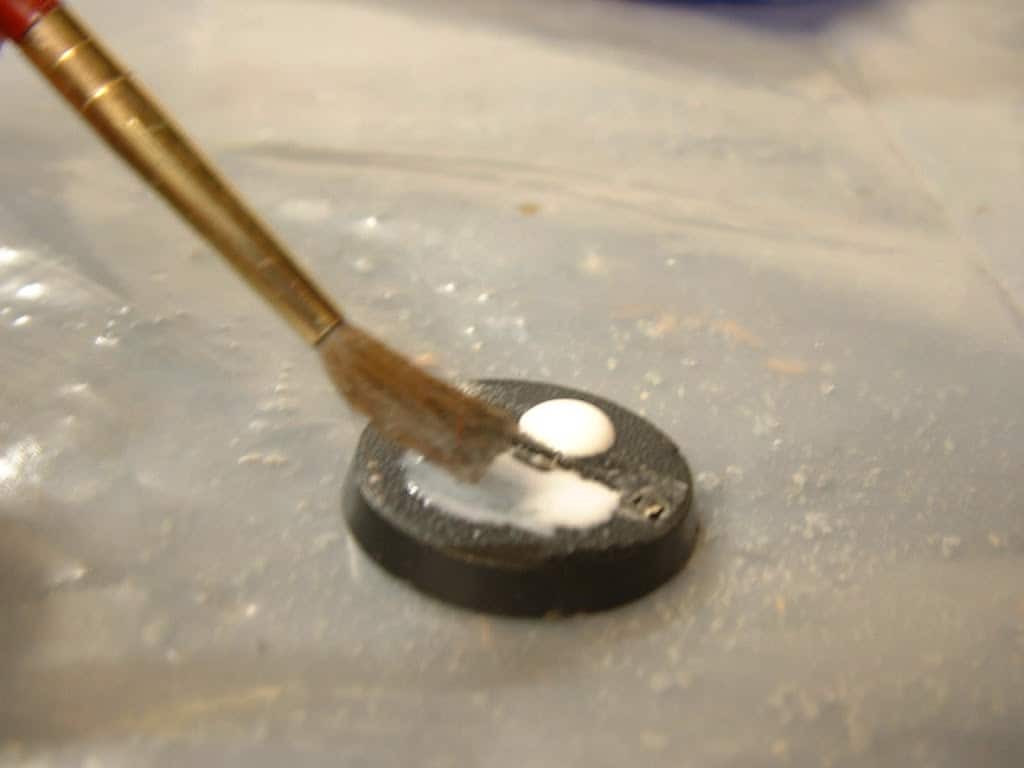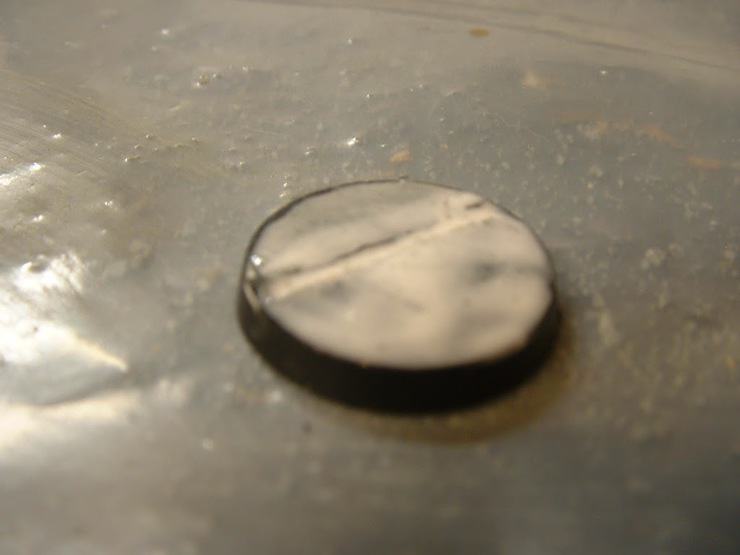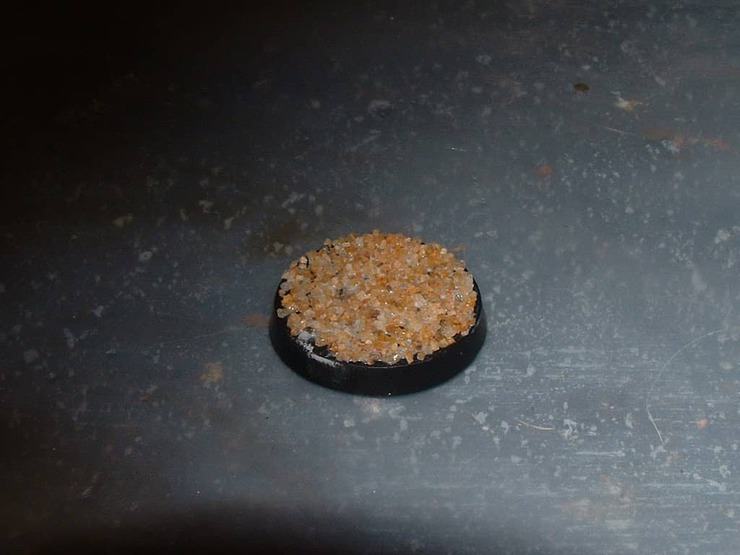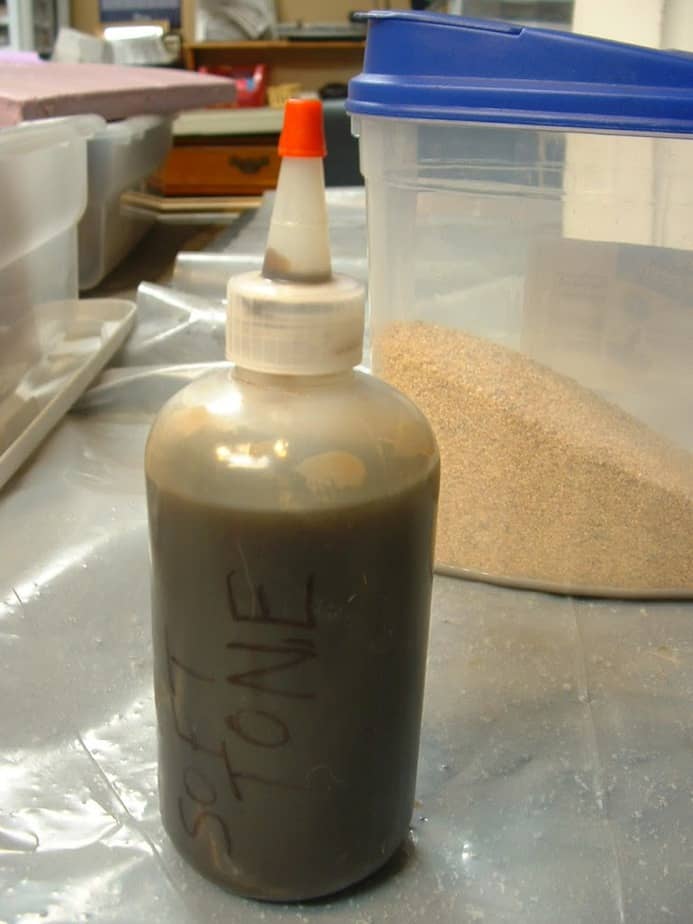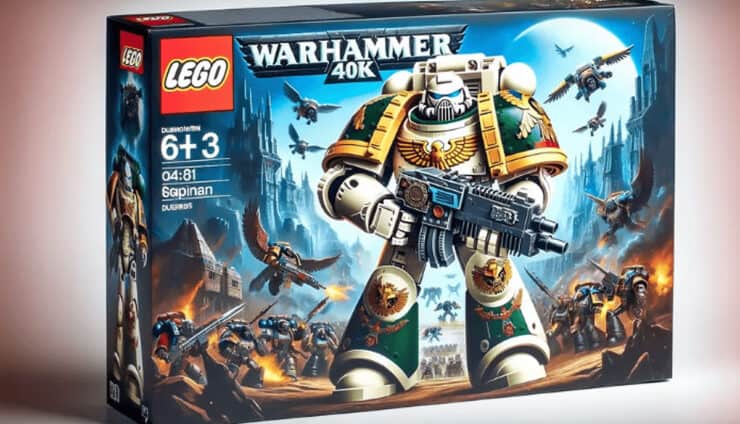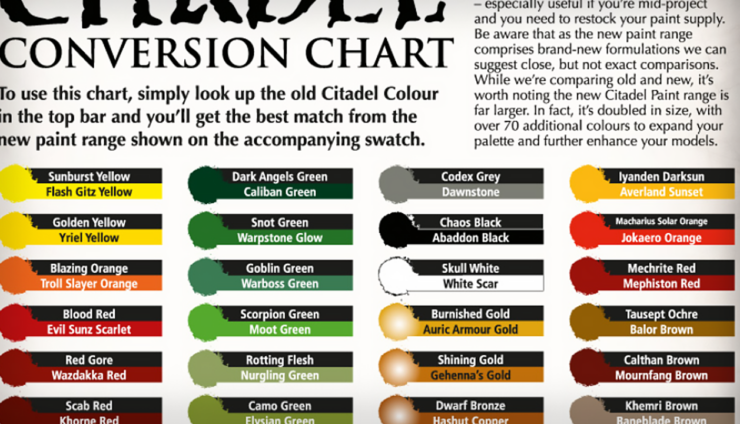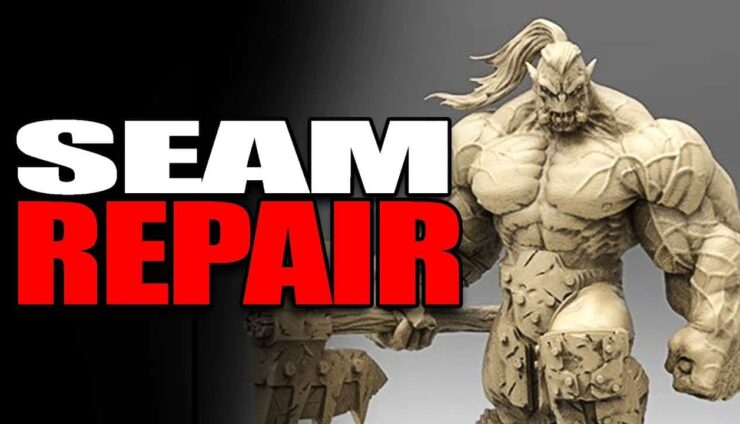Greetings fellow wargamers! We all know the value of sand as a basing solution for our miniatures.
Most veteran painters will tell you to glue sand to your base before painting so that you paint the sand too. A common technique is to glue sand down, glop on some black and spread it around, then drybrush with successive layers of grey or brown to naturally pick up the raised areas.
I myself use that method often, but I’ve run into a few problems with it over the years. Firstly, unless you use something really strong (like superglue) then the sand will tend to flake off during painting. PVA glue and scenic cement aren’t always strong enough to hold the sand in place for the purpose of painting. That brush is pulling on that sand like a two year old on daddy’s chest hair and some of it is bound to be ripped off. Ouch.
Because of this, I started experimenting with staining the sand a few years ago. I’d use washes or inks, or dirty water even. And on small bases this was alright, but on the larger bases (and terrain) it didn’t quite cut the mustard. The results were inconsistent and the mix didn’t quite spread around the way I’d like it to. So I started experimenting with other mediums and discovered what I think might be the best use for Quickshade (dip) never invented. And that is shading your bases!
Here’s what you’ll need for this tutorial:
- An old base
- An old brush, wide, soft bristles
- PVA (white) glue
- Some wood stain (or Quickshade)
- An empty bottle (not required, but recommended)
- Sand
- Flock
First, apply some glue to the base. Doesn’t need to be a ton, but don’t be squeamish. Glue is cheap, and if you use too little and the sand won’t stick.
Use that old brush to spread the glue around until it’s consistent from edge to edge.
(note, if you paint the base brown first, before gluing on the sand, then it will lighten the appearance of the base considerably. You’ll see this in the final example, below)
Now either pour the sand on top of the fresh glue or dip the base in the glue. Don’t rub it in the glue, just let the sand naturally adhere to the surface. It there is some on the edges, wipe it off with your finger or a tissue.
For this next step (which is optional) you’ll need a bottle. I use these bottles. You can find them at your favorite local craft shop such as Michael’s or even four wall stores like Target and Walmart, etc. They are CHEAP, CHEAP, CHEAP, so buy a bunch for making your own custom mixes, inks, washes/glazes, etc.
I find the ‘dip’ method to be frustrating and wasteful. It also goes against a core concept in painting which is color application, not oversaturation. Dip is, effectively, a high gloss varnish/brown wash. And while I feel like does have it’s place on my workbench, it is used sparingly. I also hate the old fashioned metal paint can, which doesn’t nothing to help change the image that Quickshade is effective a stain/varnish mix that you can get at any local DIY store for half the price.
So what I do is I put it in a bottle. The bottle helps with application and it also keeps me from having to bust out the paint key every time I want to use a little bit of quickshade.
Next, apply some of the shade to the base. Be generous. Use that old brush from before to spread it around (Note: if you don’t soak your brush in mineral spirits after this session, your brush is gone for good. I normally keep a pack of cheap dollar store brushes around for this purpose, and then just check the used brush after this session. I find no reason to waste time cleaning a .20 cent brush).
Now just flock as desired, paint the edges of the bases, and presto! Instant shaded sand!
What’s even better is that the quickshade acts like superglue and bonds that sand to the base like it were cement! That sand isn’t going anywhere. The sand itself will absorb most of the dip and the rest will help to act as a grout between them grains of sand.
Here you can find an example of a figure we used this method on (it’s base). As you can see, it creatures a rich, interesting base with next to no effort. Voila!
My name is Caleb and I am the owner of White Metal Games, a miniature painting and assembly service. Be sure to check us out on facebook too! And until next time . . .
PUT YOUR MINIS WHERE YOUR MOUTH IS!
